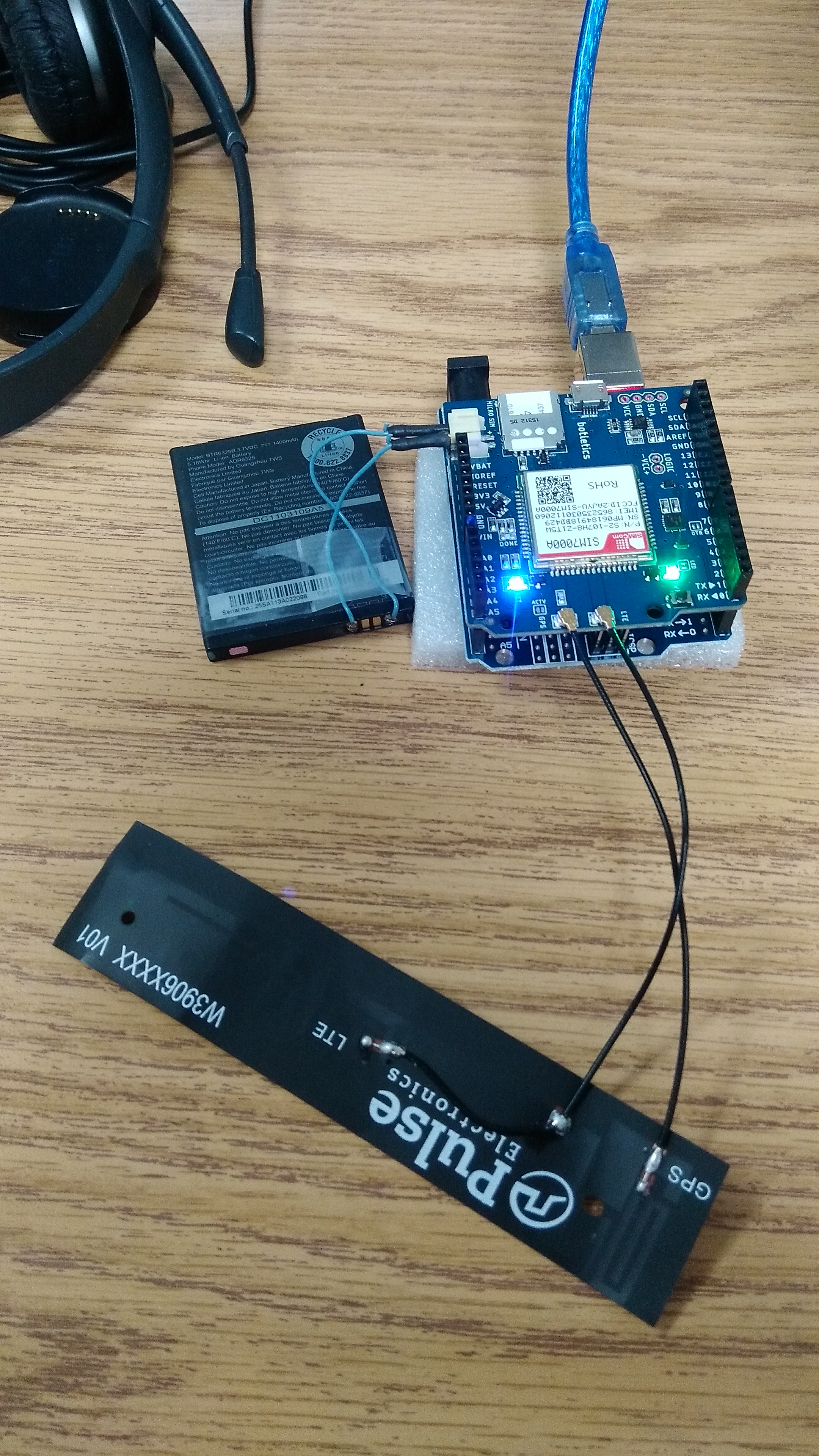
In the continuing process of testing out various aspects of using the Botletics LTE Arduino shield, I’ve decided to do a quick test with a few other SIM cards that I have available. I tested two other options, my Straight Talk SIM card, and a Freedom Pop SIM card. I was particularly interested in the Freedom Pop card, since that would allow me to have a free option for my board.
The first thing I did was add the following lines to my sketch, to handle the APN’s:
//fona.setNetworkSettings(F(“your APN”), F(“your username”), F(“your password”));
//fona.setNetworkSettings(F(“m2m.com.attz”)); // For AT&T IoT SIM card
//fona.setNetworkSettings(F(“telstra.internet”)); // For Telstra (Australia) SIM card – CAT-M1 (Band 28)
fona.setNetworkSettings(F(“hologram”)); // For Hologram SIM card
// WJH fona.setNetworkSettings(F(“fp.com.attz”)); // For Freedom Pop SIM card – Sort of works. Connects, but you need their app to text/call/sms/web/etc.
// WJH fona.setNetworkSettings(F(“tfdata”)); // For Straight Talk SIM card – sort of works. Connects and sends/receives SMS, but no web data.
That way, I just un-comment whichever option I need, and flash that to the board. Note that there are other options that I think you can pass for APN controls, but these three options (APN, user name, password) are the only ones this sketch accepts.
Here was the results of my test. Starting with Freedom Pop:
FONA> C
—> AT+CCID
<— ***************
SIM CCID = ***************
FONA> 1
—> AT+CPSI?
<— +CPSI: LTE CAT-M1,Online,310-410,0×9308,125708560,61,EUTRAN-BAND12,5110,3,3,-16,-98,-65,10
—> AT+COPS?
<— +COPS: 0,0,”AT&T”,7OK FONA>
n
—> AT+CGREG?
<— +CGREG: 0,1
Network status 1: Registered (home)
FONA> i
—> AT+CSQ
<— +CSQ: 24,99
RSSI = 24: -66 dBm
FONA> R
—> AT+CMGF=1
<— OK
—> AT+CPMS?
<— +CPMS: “SM”,0,10,”SM”,0,10,”SM”,0,10
FONA> s
Send to #***************
Type out one-line message (140 char): test FP
—> AT+CMGF=1
<— OK
—> AT+CMGS=”<MYPHONE#>”
<— >
> test FP
^Z
Sent!
FONA> R
—> AT+CMGF=1
<— OK
—> AT+CPMS?
<— +CPMS: “SM”,0,10,”SM”,0,10,”SM”,0,10
FONA> w
URL to read (e.g. dweet.io/get/latest/dweet/for/sim7500test123):
http://www.google.com
****
—> AT+HTTPTERM
<— OK
—> AT+HTTPINIT
<— OK
—> AT+HTTPPARA=”CID”
<— OK
—> AT+HTTPPARA=”UA”
<— OK
—> AT+HTTPPARA=”URL”
<— OK
—> AT+HTTPACTION=0
<— OK
Status: 601
Len: 0
—> AT+HTTPREAD
<— OK
Failed!
FONA>
And Straight Talk:
FONA> n
—> AT+CGREG?
<— +CGREG: 0,1
Network status 1: Registered (home)
FONA> 1
—> AT+CPSI?
<— +CPSI: LTE CAT-M1,Online,310-410,0×9308,125708560,61,EUTRAN-BAND12,5110,3,3,-18,-98,-64,8
—> AT+COPS?
<— +COPS: 0,0,”HOME”,7OK FONA>
w
URL to read (e.g. dweet.io/get/latest/dweet/for/sim7500test123):
http://www.google.com
****
—> AT+HTTPTERM
<— ERROR
—> AT+HTTPINIT
<— OK
—> AT+HTTPPARA=”CID”
<— OK
—> AT+HTTPPARA=”UA”
<— OK
—> AT+HTTPPARA=”URL”
<— OK
—> AT+HTTPACTION=0
<— OK
Status: 601
Len: 0
—> AT+HTTPREAD
<— OK
Failed!
FONA> s
Send to #***************
Type out one-line message (140 char): test 2 st
—> AT+CMGF=1
<— OK
—> AT+CMGS=”***************”
<— >
> test 2 st
^Z
Sent!
FONA>
+CMTI: “SM”,1
R
—> AT+CMGF=1
<— OK
—> AT+CPMS?
<— +CPMS: “SM”,2,30,”SM”,2,30,”SM”,2,30Reading SMS #1
—> AT+CMGF=1
<— OK
—> AT+CSDH=1
<— OK
AT+CMGR=1
+CMGR: “REC UNREAD”,”+***************”,,”19/04/29,10:42:01-32″,145,4,0,0,”+12085978931″,145,13
test 2 st
***** SMS #1 (13) bytes *****
test 2 st
*****Reading SMS #2
—> AT+CMGF=1
<— OK
—> AT+CSDH=1
<— OK
AT+CMGR=2
OK
Failed!
FONA>
What is more important is what all that garble means. Essentially, it boils down to this:
- Freedom Pop connects instantly to the AT&T network. However, you can’t read data, and you can’t send or receive text messages.
- Straight Talk connects instantly to the AT&T network. It does send and receive text messages, but it cannot use data. So, there is no way to support web interface or tunneling.
So, without further breaking it down, and just using the sketches as is, you can connect with both FP and ST, but only ST can send/receive text messages, and no data, so neither option seems to really work out of the box. If you’ve tried other options, be sure to let me know the results.
Linux – keep it simple.
Hi there, I stumbled across this post and noticed that you tried to use data without first enabling it. Please try the “G” command to enable data connection, then try the command “2” which posts data to dweet.io.
Regards,
Botletics
Mr. Woo, I am very honored that you have taken the time to view my small blog. I love your cellular shield and think you are brilliant. Thank you!
Yes, at this point during the project I was still learning how to interface with the shield.
No problem! I’m always happy to see people who are enjoying it and creating cool projects with it! If you have any questions about it in the future, feel free to let me know!